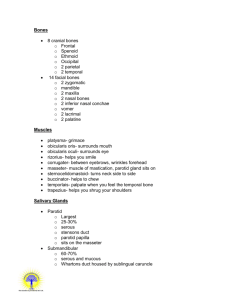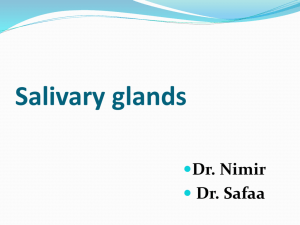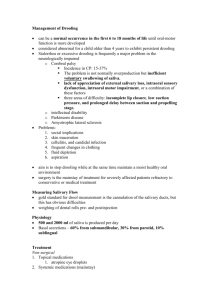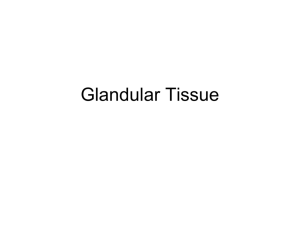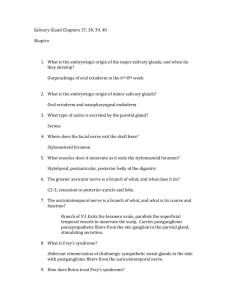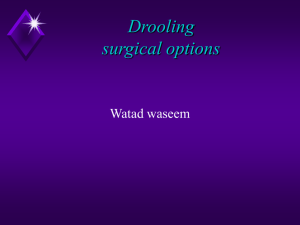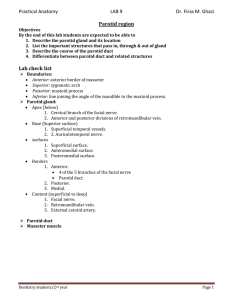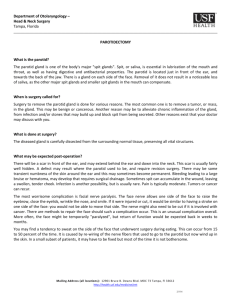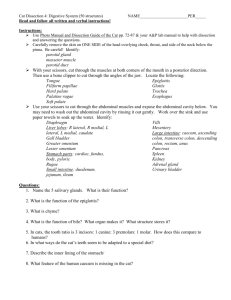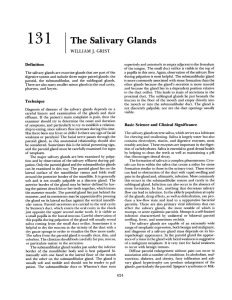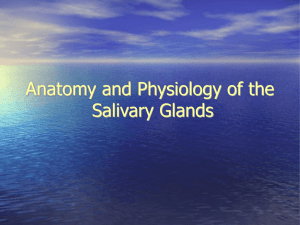Sialography online 9 24 2014
advertisement
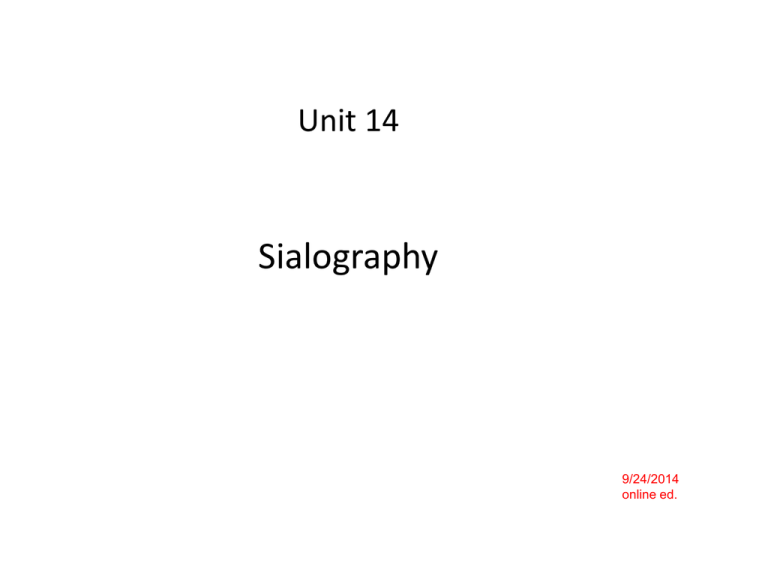
Unit 14 Sialography 9/24/2014 online ed. Radiologic exam of salivary glands and ducts using contrast media CT and MRI have largely replaced this exam What does saliva do? Mixes with food during mastication Softens food Moistens mouth Adds digestive enzymes How much saliva produced per day? Sialography may be used to demonstrate: Inflammatory lesions Tumors Fistulae (abnormal connection or passageway between two epithelium lined organs or vessels that normally do not connect) Diverticula (outpouching of hollow structure in body) Strictures (narrowing of bodily passage) Calculi 3 pairs of salivary glands Parotid Submandibular Sublingual Submandibular and parotid glands can be investigated by sialography Sublingual glands usually not – too small- difficulty in cannulation (cannula -tube inserted, for delivery or removal of fluid) Problem -Only one gland can be examined at a time! Contraindications • Severe infection of gland • Known allergies to contrast media Procedure Preliminary radiographs Detect conditions that do not require contrast Obtain optimum exposure factors Give pt secretory stimulant 2 to 3 minutes before contrast administration: Pt asked to suck on lemon wedge to empty duct Procedure (cont’d) Duct is cannulated, not punctured! Contrast introduced with fluoroscopic guidance Radiographs taken Again pt sucks on a lemon wedge to evacuate contrast Take post-procedure radiographs after 10 minutes to confirm evacuation of contrast Tangential parotid Pt -supine or prone CR perpendicular to lateral surface of mandibular ramus Parotid Gland (Lateral) Blockage of parotid duct Submandibular Glands (lateral) Submandibular duct (Axial lateral projection)
